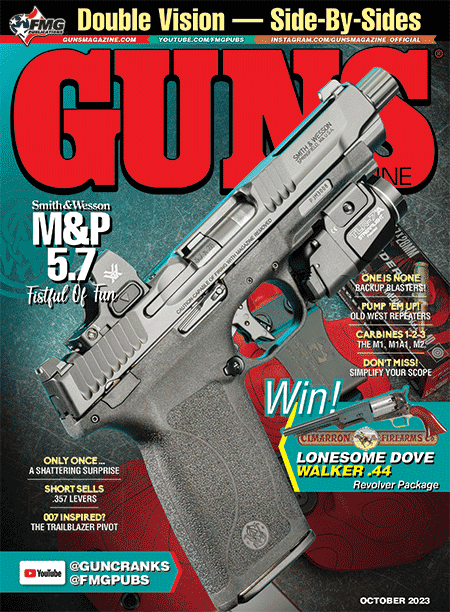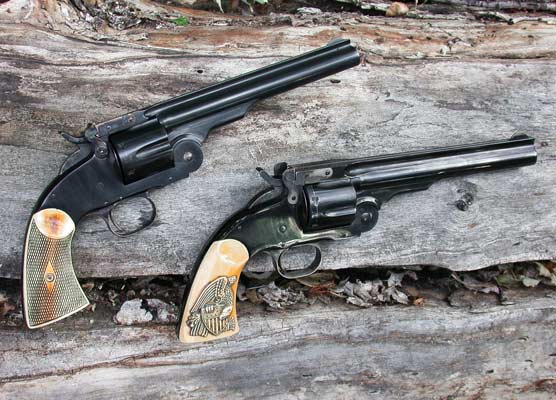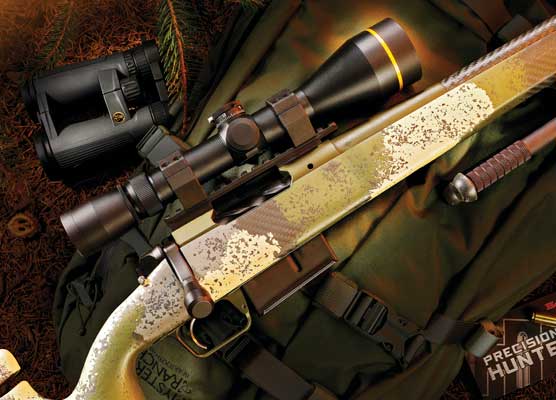Remington Part V
Hartford Armory Single Actions
Three of the finest single-action sixguns ever produced saw the light of day in the last quarter of the 20th century. These were Bill Grover’s Texas Longhorn Arms “right-handed” masterpieces with the ejector rod on the left side; the beautifully crafted, fitted and finished offerings from United States Firearms; and the equally high-quality Remington revolvers from Hartford Armory. Now all of these sixguns are gone. The longevity of the first two was measured in years, while the Remington version’s existence was more like months.
The Better Mousetrap
The Remington designs were inherently stronger than the Colt. Where Colt used three parts — mainframe, backstrap and trigger guard bolted together — Remington used a one-piece engineering marvel incorporating the mainframe and grip frame with no screws to loosen while shooting. Unlike the open-top design of Sam Colt’s percussion revolvers, the early Remington models had a solid top strap, which the United States military insisted upon Colt using in their Single Action Army.
For several decades now, Uberti has been producing Remington replicas that have been offered by Cimarron, EMF, Taylor’s and Navy Arms. In all of this time, I have never had the privilege of handling, much less shooting, an original Remington. Thanks to Hartford Armory that situation changed dramatically.
Hartford Armory was a new firearms company dedicated to producing the finest possible firearms, be they replicas or original designs. Their first cartridge-firing effort was manufacturing high-quality Model 1875 and Model 1890 Remington models on thoroughly modern, totally up-to-date machinery using the finest American-made 4130 and 4140 steels with mainframes being forged, not cast. They deviated from the original design in only one way, making the cylinder approximately ⅛” longer to allow the use of the .45 Colt ammunition available today.
The original Remington cylinders were even shorter than those in the Colt Single Action Army and many of the modern rounds offered in .45 Colt are deliberately made long enough to preclude their being used in Colt Single Actions or replica Remington guns. These guns simply are not strong enough to handle +P or Heavy Duty .45 Colt hunting loads. The Hartford Armory sixguns were not only true to the original Remington design, they were also strong enough to handle any factory .45 Colt ammunition currently being offered. It was, in fact, strong enough to soon be offered in .44 Magnum.
I spent three days shooting three Model 1890s and one Model 1875 Hartford Armory Remington all chambered in .45 Colt. During this time I ran everything from 200-grain .45 Colt Cowboy loads at 700 fps all the way up to 265-grain jacketed bullets at 1,350 fps and 340-grain bullets at 1,230 fps. Those last two figures really are correct and this new production Remington did handle the same loads I normally used in a .45 Colt Ruger Blackhawk. In the process of shooting these heavier loads I found out exactly how comfortable the Remington grip frame really could be. One of the 1890s, a 7 ½” version, received further testing and it continued to shoot all loads accurately and to also handle heavy loads with ease.
For some unknown reason, whenever the Italians first started producing the Remington replica, they changed the grip shape and hammer angle just enough to make it harder for me to reach the hammer spur. In comparing an original Model 1875 to the replicas, it was easy to see more room between the back of the trigger guard and the front strap on the original. The same original dimensions were incorporated into the Hartford Armory Models 1875 and 1890 and this combined with the original shape of the backstrap made all the difference when shooting heavy loads.
Buttery Smooth
The Hartford Armory Remington came from the factory with an incredibly smooth action, an easy to reach and operate hammer and the trigger pull on the 7 ½” Model 1890 I shot had a trigger set at 2. 75 lbs. However, it was only the beginning. Each of these Remington Models featured a beautifully polished blue finish, with a case-hardened hammer and loading gate as on the originals. Cylinder lockup was absolutely T-I-G-H-T with no movement side-to-side or front-to-back. The barrel cylinder gap on the 7 ½” Model 1890 would not accept the smallest feeler gauge I have, which is 0.002″.
Even with its tight tolerances, this sixgun handled 25 black powder rounds before it started to bind at the front of the cylinder. For those shooters expecting to use mostly black powder loads, a special version was to be offered with a larger barrel/cylinder gap and a special grooved base pin.
Cylinder to barrel alignment was so precise the forcing cone was only two degrees. Hartford Armory cautioned against anyone opening this further as “a funnel is not needed when the cylinder and barrel line up properly.” Tolerances on cylinder chambers were held tightly with chamber throats being a uniform 0.451″. Just as with the original Remington, both the Model 1875 and1890 were provided with pinched post front sights that I found quite easy to see. With the strength and accuracy afforded by these new Hartford Armory sixguns, they would also have been very popular with handgun hunters, especially those who wished to use a traditionally styled revolver. To facilitate different bullet weights and velocities, Hartford Armory offered a screw-in front sight available in different heights with a special wrench for removal and installation.
This new-old design from Hartford Armory went way to the top of the list of favorite single action sixguns. In addition to .45 Colt and .44 Magnum, both the 1875 and 1890 were also to be offered in .44-40. Even in the 21st century, enough of me was still stuck in the 19th century to want one of each chambered in .44-40 and .45 Colt. But alas, it was not to be. Hartford Armory did not last very long and very few guns were produced. I heard they got a military contract and instead of building Remington guns, they concentrated on government money.






